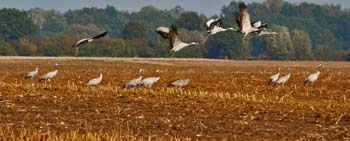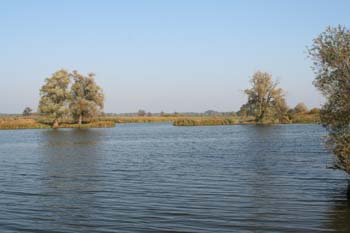Large-scale Nature Conservation Project "Lower Havel"
In addition to the Elbe, Middle Elbe Biosphere Reserve also contains the estuaries of major tributaries such as the Schwarze Elster and the Mulde in the south and the Havel in the north. They ensure that the Elbe River exists as part of an extensive river basin system. Restoration measures like in the Lower Havel Lowlands make a positive impact beyond just the area were the measures are being implemented. They are also a sign of the sustainable treatment of our natural resources.
The Lower Havel Lowlands extend across state borders and are of national importance. On 2 September 2005, a nature conservation project was kicked off with the issuance of grant approval by the then minister for the environment, Jürgen Trittin.
“The Lower Havel Lowlands are an important element of the Westhavelland Nature Park and Middle Elbe Biosphere Reserve. They are also the largest and most crucial wetlands in inland Central Europe. They were ecologically damaged by river construction measures in the first half of the 20th century. In the last 15 years problems have been compounded by reduced water availability. As a consequence many species are now at risk of extinction. Restoration activities will once again turn the Lower Havel into an intact river with clean water and better water retention. The activities will also contribute towards implementing the EU Water Framework Directive and the Natura 2000 Networking Programme.” (From Brandenburg and Saxony-Anhalt’s joint press release from 2 September 2005.)
The project’s executing organisation is NABU Germany. Together with the federal government and the states of Brandenburg and Saxony-Anhalt it will use the 25 million euros in funding to carry out the project in two phases (2005-2008 care and development planning / 2009-2018 implementation of the measures).
The municipal interests are laid down in a regional development concept by the districts of Havelland (Brandenburg) and Stendal (Saxony-Anhalt). The inhabitants are to be included as well by having the opportunity to participate in informational events and excursions. The numerous suggestions for measures that have been made by citizens, land users, associations and communities prove that this large-scale nature conservation project has the support of the region.
www.nabu.de/themen/fluesse/gewaesserrandstreifenprojektunterehavelniederung

